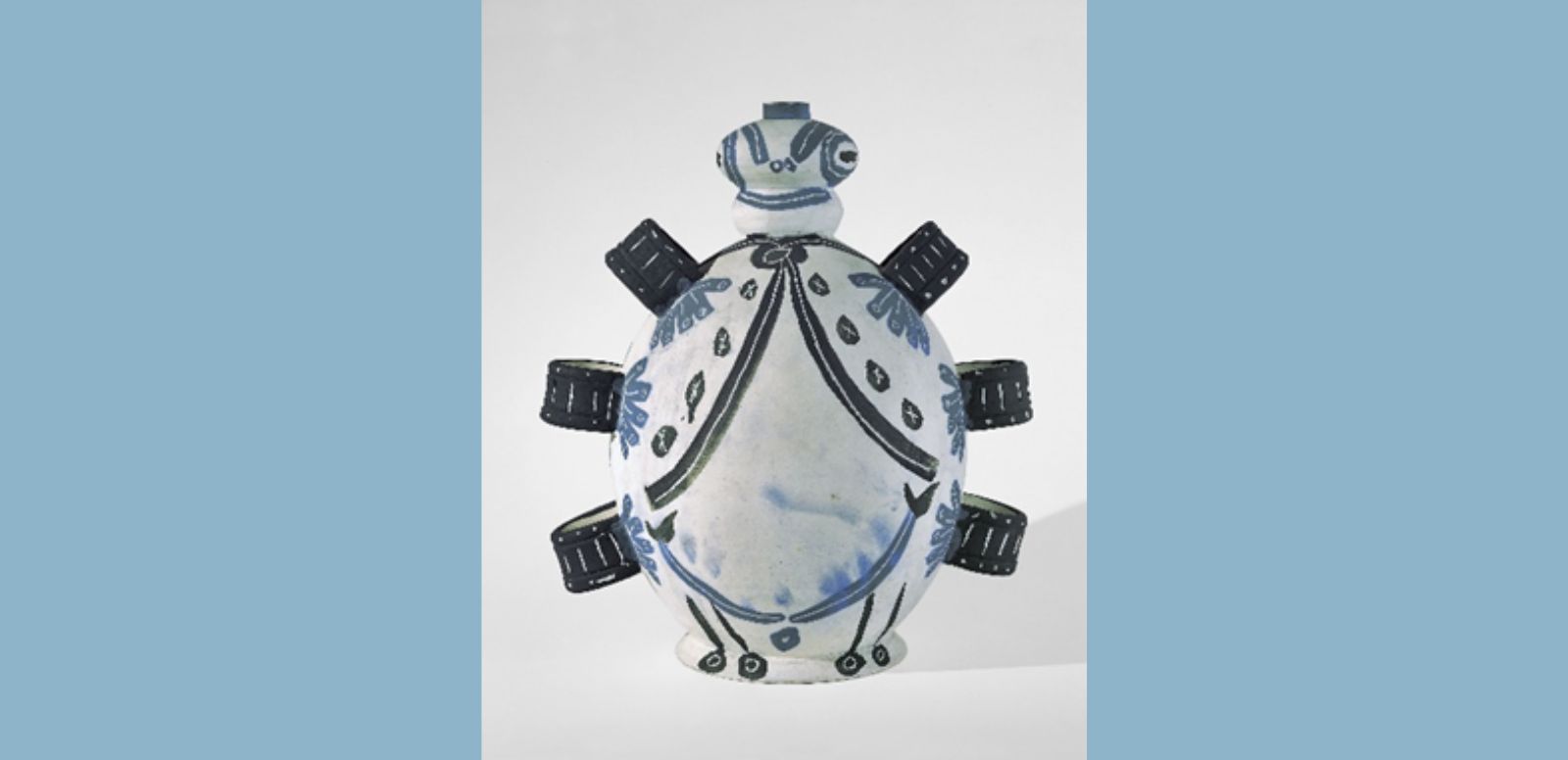
42 × 35 × 26 cm.
Museo Picasso Málaga. Donación de Bernard Ruiz-Picasso.
© Sucesión Picasso, VEGAP, Madrid, 2023
September 16 - June 30
10:00 - 12:15 14:00 - 17:00
July 1 - September 15
10:00 - 12:30 14:00 - 18:00
Museum closed on Tuesdays
Museum closed on: January 1st, May 1st, November 1st, November 11th and December 25th.
In 1946 Pablo Picasso discovered the world of potters and began to experiment with ceramics at the Madoura factory in Vallauris, a former pottery centre in south-eastern France. The artist was captivated by the place, with its old houses and traditional wood-fired kilns, as well as by the opportunities offered by Suzanne and Georges Ramié, the owners of the Madoura workshop, with whom he developed a close relationship.
In collaboration with the Madoura potters, Picasso began to create various pieces, using plates and jugs produced by the factory and designing some others with another master potter, Jules Agard.
One of the most striking pieces he created during his time there is Insecto, which is now in the Museo Picasso Málaga. This pot with three handles on each side and a stopper is known in Provence by the name of "gus" and is used to hold vinegar or water. A rope was usually passed through its handles to hang it on the wall.
Picasso chose a simple technique of decoration, painting directly on the white earthenware with blue engobe and engraving some motifs in the blue, revealing the white underneath and transforming the traditional vase into a six-legged animal.
His aim during this period was to push his boundaries and explore techniques he had not previously worked with. The artist appreciated the possibilities of transforming ceramic forms and in the case of Insecto he came up with the idea of taking an animal out of the whole vessel by painting the stopper as a head with eyes, the handles as arms with little hands stretched over the body of the vessel and legs at the bottom.
Sources:
Museo Picasso Málaga: https://www.museopicassomalaga.org/coleccion/insecto
Museo Picasso Málaga. Universo Picasso: https://www.museopicassomalaga.org/universo-picasso/hecho-de-tierra
Musée de la céramique-Vallauris: http://www.vallauris-golfe-juan.fr/Formes-Metamorphoses-la-creation.html?lang=fr

